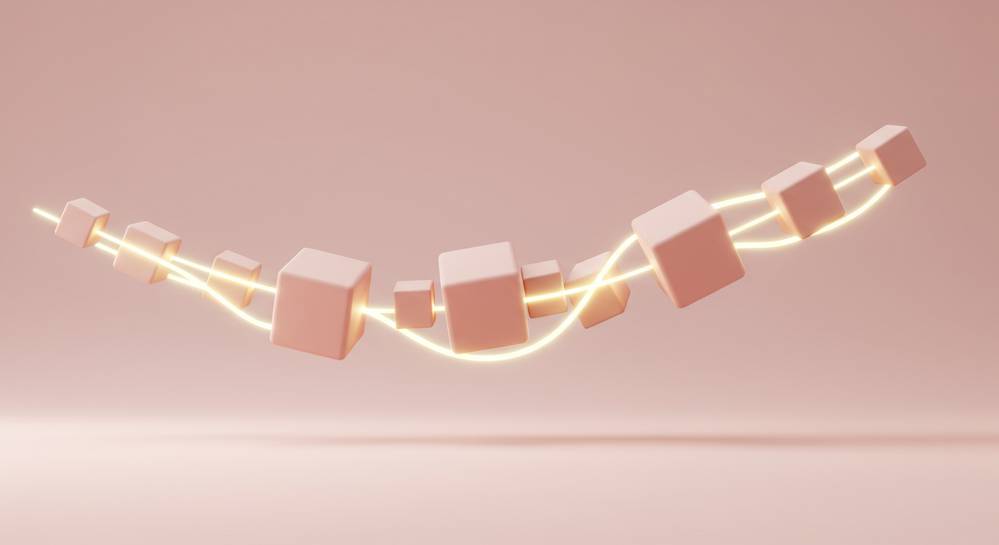The term blockchain is everywhere, but what does it actually mean? Many find it complex and confusing, often associating it only with cryptocurrencies like Bitcoin. However, its potential is far greater. This guide breaks down the core ideas of blockchain technology for beginners into simple, easy-to-understand concepts. You will learn what it is, how it works, and why it is considered one of the most important inventions since the internet.
What is blockchain in the simplest terms?

At its core, understanding blockchain technology for beginners is like picturing a shared digital notebook. Imagine a ledger distributed across countless computers, visible to everyone in the network. Every time a new transaction occurs, it gets recorded on a new page, known as a block. Before this page is permanently added, a majority of participants must agree that the information is valid. This consensus mechanism is fundamental to its operation.
- Block: A record of new, verified transactions, similar to a page in a traditional ledger that gets sealed once filled.
- Chain: The cryptographic, unbreakable link that connects all blocks together in a precise chronological order, creating a secure and immutable history.
This structure creates a system that is both decentralized and transparent. No single authority owns or controls the data, which distributes trust among all users instead of placing it in a central institution. Tampering with a record is practically impossible, as changing one block would alter the cryptographic signature of every subsequent block. This discrepancy would be instantly flagged and rejected by the network, a core security feature of systems like what is Bitcoin.
How does blockchain technology actually work?

The technology functions through a powerful combination of three core concepts. These are a distributed network, cryptographic security, and a shared agreement protocol. Together, they create a system that operates securely without needing a central authority like a bank. This architecture is fundamental to understanding blockchain technology for beginners and its revolutionary potential.
Decentralization: power to the network
Instead of residing on a single central server, a blockchain ledger is distributed across a peer-to-peer network. Each computer, or node, holds a full copy of the entire transaction history. This decentralization eliminates a single point of failure. If one node goes offline, the network continues to operate uninterrupted, making it incredibly resilient and censorship-resistant.
Cryptography: the unbreakable seal
Cryptography secures every transaction on the network. Each block is sealed with a unique cryptographic fingerprint called a hash, which also links to the previous block. This design makes the data immutable, or unchangeable. Any attempt to alter a past record would break the chain, an invalidation the network would instantly reject. This security is foundational for applications like undefined.
Consensus mechanism: achieving agreement
Since no single entity approves transactions, the network must agree on the validity of new entries. This is achieved through a consensus mechanism, such as Proof of Work or Proof of Stake. This process ensures all participants have an identical, updated copy of the ledger. It guarantees only legitimate transactions are added to the chain, maintaining the integrity of the entire system.
Why is blockchain technology so important?

The unique structure of blockchain offers powerful advantages over traditional systems. Its importance extends far beyond cryptocurrency, promising to redefine how we manage data, ownership, and trust across industries. For blockchain technology for beginners, understanding these core benefits is key to grasping its revolutionary impact on digital interactions.
- Enhanced Security: By distributing data across a decentralized network and linking blocks with cryptography, the system is incredibly resistant to tampering. Altering a single record would require an impossible amount of computing power.
- Greater Transparency: All participants on a network can view the same ledger of transactions. This shared visibility creates accountability and builds trust without needing a central authority to verify information.
- Increased Efficiency: Blockchain streamlines processes by removing intermediaries like banks or brokers. This is a core function of foundational protocols like a undefined, which reduces costs and settlement times from days to minutes.
- Complete Traceability: The technology creates a permanent, unchangeable audit trail. This is invaluable for supply chains, allowing anyone to track a product’s journey from origin to consumer and verify its authenticity.
What are the real world uses of blockchain?
While blockchain gained fame with cryptocurrency, its applications now solve real-world problems across many sectors. Innovators are using its core features of security and transparency to build a new generation of digital services. For anyone exploring blockchain technology for beginners, seeing these practical examples highlights its true potential beyond just finance. These use cases show how it is reshaping industries by creating more trust and efficiency.
Cryptocurrencies and digital finance
This remains the most famous application. Blockchain enables secure, peer-to-peer transactions without needing a bank. Bitcoin pioneered this as a decentralized digital currency. Meanwhile, other platforms expanded on the concept, with the most notable example being undefined, which allows developers to build decentralized applications on its network.
Supply chain management
Companies use blockchain to create a transparent and unchangeable record of a product’s journey. Goods can be tracked from the factory floor to the store shelf with complete accuracy. This allows consumers to verify the authenticity of products like luxury goods, organic food, and pharmaceuticals, effectively fighting counterfeits and ensuring quality standards are met.
Automated smart contracts
These are self-executing contracts where the terms of an agreement are written directly into code. They automatically perform actions, like releasing payments, once predefined conditions are met. This removes the need for intermediaries, reduces costs, and speeds up processes in areas like insurance claims, real estate transactions, and royalty distributions for artists.
Understanding blockchain is the first step toward seeing its immense potential. This technology is more than just a buzzword; it is a powerful tool for creating a more secure, transparent, and efficient digital world. As it continues to evolve, its impact will only grow. To continue your learning journey, explore more in-depth topics at Make Millions With Coin.


